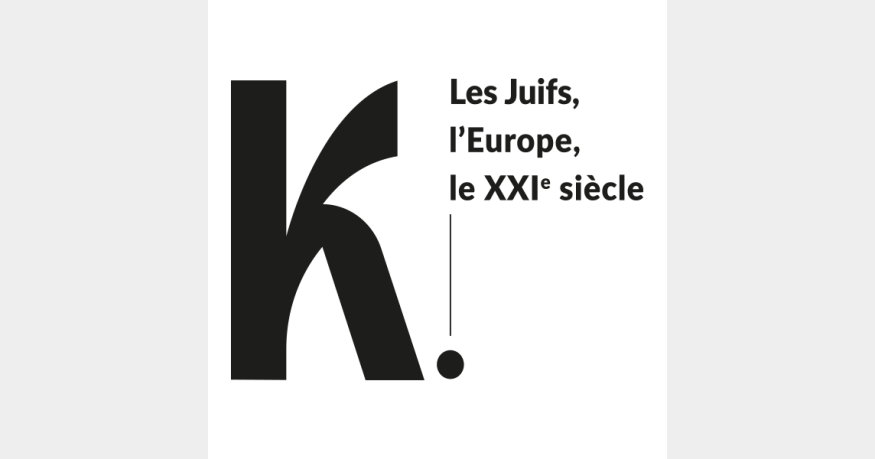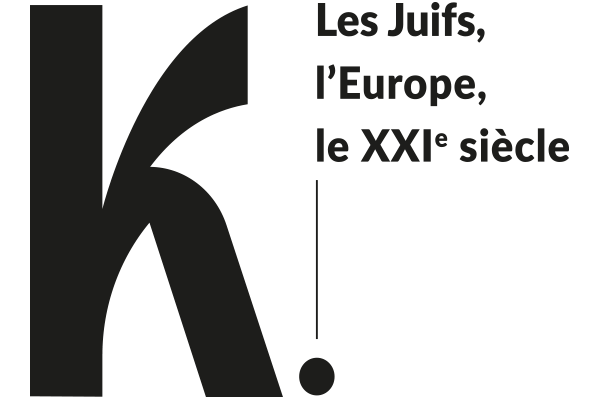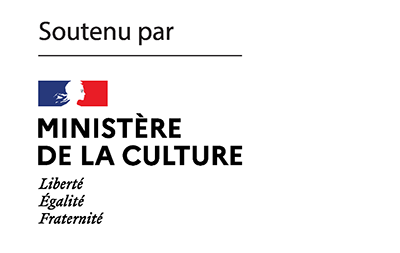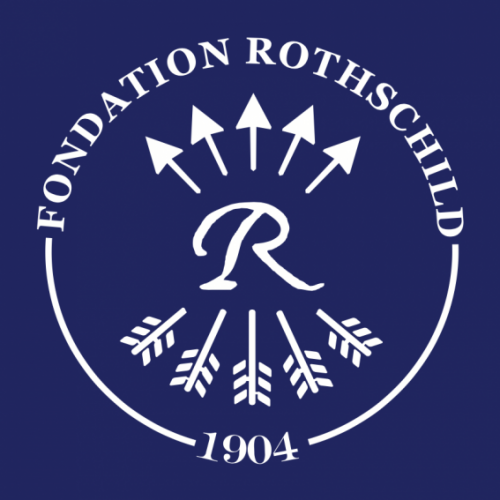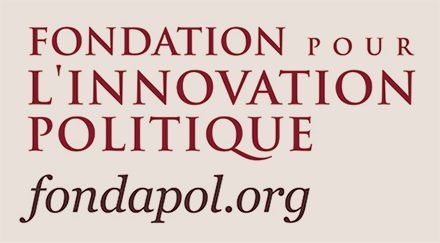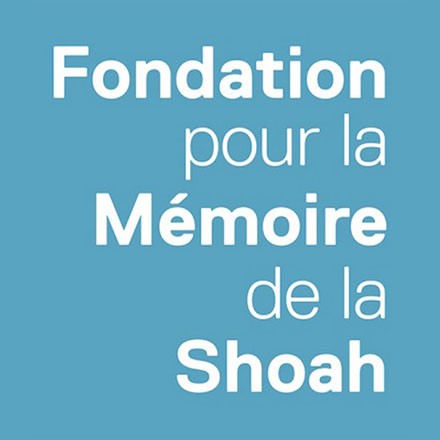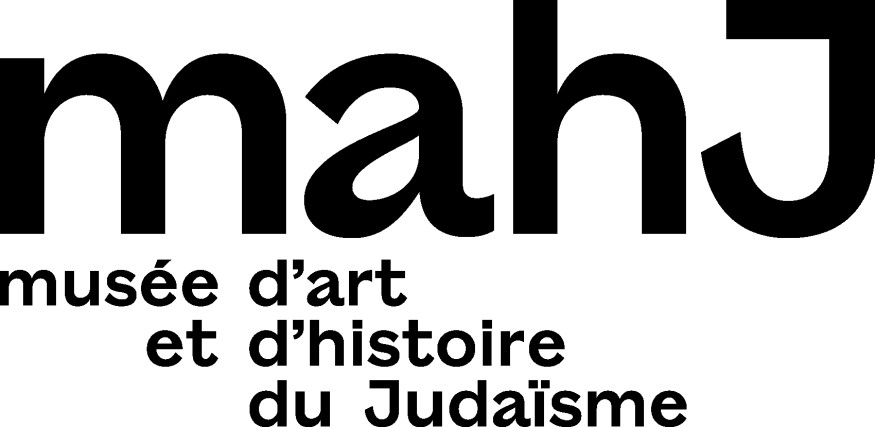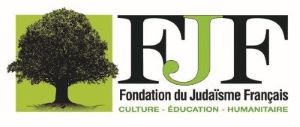Edito
During this summer break, the magazine is pause its regular publications. However, while we await the start of the new school year, we’ll be offering our readers a weekly feature exploring an important theme that has mobilized us this year and which, in our current context, remains topical. An opportunity to discover the article you missed, to rediscover the one that caught your eye, and to share some of K. ‘s publications with friends who don’t yet know us. As a reminder, our archives are open, and we invite you to browse through the hundreds of texts we’ve already published over the last three and a half years, all of which bear witness to the magazine’s ambition: to move between topicality and historical depth, to take account of contemporary issues that call for reflection on the situation of European Jewry.
This week, the focus is on our interviews, each of which provides an opportunity to familiarize ourselves with a particular way of thinking about history, memory or Jewish identity, and the challenges we face today. Readers in search of a literary escape will be delighted by Etgar Keret and André Markowicz. And we recommend the enlightening interviews with David Nirenberg on the genealogy of anti-Judaism, with Tal Bruttmann on the ethics of the historian, with Jean-Frédéric Schaub and Silvia Sebastiani on the construction of the concept of ‘race’, and with Shira Klein and Jan Grabowski on the militancy of Polish nationalists rewriting the history of the Holocaust on Wikipedia.
This summer, we’re preparing for the new school year, and we’d like to take this opportunity to thank all our donors and invite regular readers who haven’t done so to support us (via PayPal orHelloasso). We are currently developing projects to give the magazine a greater impact, which we feel is more necessary than ever in these troubled times. We know that many of our readers share this view, as their numbers have more than doubled since October 7th brought the Jewish world to its knees and to the center of national debates, as witnessed by the recent elections across Europe.
Have a good summer and happy reading!
The Editor
During this summer break, the magazine will pause its regular publications. Don’t worry, however: until the new season arrives, we’ll be offering our readers a weekly feature exploring an important theme that has mobilized us this year and which, in our current context, remains topical. An opportunity to discover the article you missed, to rediscover the one that caught your eye, and to share some of K. ‘s publications with your friends who don’t yet know us. As a reminder, our archives are open, and we invite you to browse through the hundreds of texts we’ve already published over the last three and a half years, all of which bear witness to the magazine’s ambition: to move between topicality and historical depth, to take account of contemporary issues that call for reflection on the situation of European Jewry.
This week, we return to the discursive confrontations surrounding the Israeli-Palestinian conflict. For the most part, they have been at the heart of post-October 7 debates. The aim is to discipline the words that inflame the conflict: inflammatory slogans, dehumanizing insults and contentious qualifications. And, conversely, it will be a question of destabilizing the too well-established meanings, the supposedly unproblematic genealogies and the self-evident political appellations. In a word, to ensure that language is a tool for resolving and clarifying, rather than aggravating and obscuring.
This summer, as we prepare for the new school year, we’d like to take this opportunity to thank all our donors, and invite regular readers who haven’t yet done so to support us (via PayPal or helloasso). We are currently developing projects to give the magazine a greater impact, which we feel is more necessary than ever in these troubled times. We know that many of our readers share this view, as K.’s audience has more than doubled since October 7th brought the Jewish world to its knees and to the center of national debates, as witnessed by the recent elections across Europe.
Wishing you a good summer and happy reading!
The Editors
In light of recent elections across Europe, the issue of antisemitism along the political spectrum is fresh in our minds and begs the question if elected officials will be able to tackle it amongst their own ranks. Our firmest commitment is to ensure that they cannot evade this accountability – for their sake, for the sake of the Jews, and for the sake of Europe as a whole. Because the problem is a European one, that’s where we wanted to place ourselves in K. magazine from the outset. That of a Europe which, as the post-October 7 period has made abundantly clear, has no other way of rethinking itself today than through the prism of the fate of the Jews.
That’s what this issue is all about. Europe, as an entity and as an idea, is the breeding ground for modern nation-states, which are interrelated and in constant transformation. But how is the term “nation-state” to be understood? Is the hyphen the mark of a successful synthesis, or of an eternally recurring problem? It all depends on how you look at it. For while we usually consider that a nation exists insofar as it has endowed itself with a state, certain borderline cases call this classic scheme into question. This week, Danny Trom – paying homage to Milan Kundera, who died just over a year ago – looks at how the Dissidence movement articulated one such borderline experience. Under Soviet domination, the state is not what sustains national existence, but rather what stifles it. This raises the question of how to ensure the continuity of the nation independently of, or even against, the state. According to Danny Trom, the critical conceptions born of the cultural resistance of Dissidence work from within the European mind, and its relationship to nationalism. This is why they apply with particular acuity to Israel, which Kundera described as “the true heart of Europe, a strange heart placed beyond the body”.
Fortunately, there are also a handful of countries where Jews, if not at home, have always been welcomed. This week, Clément Girardot and Yoann Morvan give us an insight into the surprising case of Georgia, a small country between Europe and Asia that never harbored antisemitism, and early on regarded Jews as an integral part of the nation. What are the origins of this philosemitic exception? And why is the Georgian Jewish community still alive and well today, but on the verge of extinction? To answer these questions, we invite you to embark on a journey of Georgian Jewry.
The recently concluded elections in France have given us the strange feeling of emerging from a narrowly averted peril, but with no real sense of relief. The fact that the Left, whose unity was not produced from within, but only through a just oppositional cause, has recovered electorally only reassures those who prefer to ignore what is most unacceptable about it. In this respect, eradicating its antisemitism is one of the great tasks of the day. Will the Left be able to face up to it outside an electoral emergency? Elisheva Gottfarstein deconstructs the efforts of organic intellectuals in France’s far-left party LFI’s recent statements and how they are tainted by an antisemitism that is impossible to sweep under the carpet.
Wishing you a good summer!
That’s what this issue is all about. Europe, as an entity and as an idea, is the breeding ground for modern nation-states, which are interrelated and in constant transformation. But how is the term “nation-state” to be understood? Is the hyphen the mark of a successful synthesis, or of an eternally recurring problem? It all depends on how you look at it. For while we usually consider that a nation exists insofar as it has endowed itself with a state, certain borderline cases call this classic scheme into question. This week, Danny Trom – paying homage to Milan Kundera, who died just over a year ago – looks at how the Dissent movement articulated one such borderline experience. Under Soviet domination, the state is not what sustains national existence, but rather what stifles it. This raises the question of how to ensure the continuity of the nation independently of, or even against, the state. According to Danny Trom, the critical conceptions born of the cultural resistance of Dissent work from within the European mind, and its relationship to nationalism. This is why they apply with particular acuity to Israel, which Kundera described as “the true heart of Europe, a strange heart placed beyond the body”.
Fortunately, there are also a handful of countries where Jews, if not at home, have always been welcomed. This week, Clément Girardot and Yoann Morvan give us an insight into the surprising case of Georgia, a small country between Europe and Asia that never harbored antisemitism, and early on regarded Jews as an integral part of the nation. What are the origins of this philosemitic exception? And why is the Georgian Jewish community still alive and well today, but on the verge of extinction? To answer these questions, we invite you to embark on a journey of Georgian Jewry.
And finally a last look back at France’s left and how it is tainted by an antisemitism that is impossible to sweep under the carpet – despite the efforts of organic intellectuals in France far-left party LFI, as Elisheva Gottfarstein’s text shows.
Wishing you a good summer!
The National Rally (RN), a nationalist, racist and antisemitic party, is on the brink of power in France. We therefore devote this week’s issue to the unique and indisputable challenge of this second round: the need to resolutely oppose the extreme right. If we’ve reached this point, it’s because, without changing anything in its ideological matrix, it has managed to pass itself off in the eyes of a significant proportion of the French population as something it could never be: a credible political alternative, a responsible and modern party. At the heart of this well-known “dediabolization” operation is the idea that the RN has rid itself of its antisemitism. From now on, the devil dresses as a philosemite. Julia Christ’s text examines the context in which the RN’s claim to be a “shield for Jews” may have been founded. And what responsibilities need to be assumed if we are to mount an effective opposition to an antisemitism that now knows how to move forward in disguise.
In order to dispel the illusion that the RN has become the defender of the Jews, and that the latter are therefore rallying it in large numbers, we publish a cross-interview between Johan Weisz – editor-in-chief of the extreme right media specialist Streetpress – and Jonathan Hayoun – co-author, with Judith Cohen Solal of an investigation (La main du diable : Comment l’extrême droite a voulu séduire les Juifs de France [The Devil’s Hand: How the extreme right sought to seduce France’s Jews ] (Grasset, 2019)) on the evolution of its discourse and strategy concerning the Jews.
In our third text for this week we focus – as reflected in the dialogue between Bruno Karsenti and Danny Trom – on the dilemma facing Jews on the left, which has long been their political home, and which should be their refuge from the rise of the extreme right.
“Violence” is a word that resonates strangely with Jewish ears. Whether it echoes persecution or the accusations often used to justify it, violence is always perceived as something imposed from outside. And indeed, for the exilic tradition, violence is excluded from the realm of possible recourse. However, since the realization of the Zionist project, the political situation has changed. For the State of the Jews, like any other State, cannot avoid exercising violence: this is a consubstantial fact of political sovereignty. From then on, the problem that divides Jewish consciences, to the point of dividing them profoundly today, is that of the possibility of assuming this inflicted violence. In the text we are publishing this week, Danny Trom sets out to shed light on the historical and ideological motives behind the radical rejection or unreserved acceptance of the violence inflicted by Israel. Between the violence suffered and the violence inflicted, the roots of an ambivalence that we would do well not to abandon are revealed.
Over the past few months, a great deal has leaked out of the confines of the university, placing it at the center of media and political attention. After a tour of TV shows by a radical right-wing journalist who had “infiltrated the heart of the extreme left”, the appetite for easy polemics, outrageousness and alarmism will have found something to satiate itself. And, indeed, there is cause for concern, provided we avoid panic. In The scrutinized university, a student gives us their views and reflections – informed by the social sciences and their familiarity with the world of activism – on what’s happening in the universities, on the scale of the mobilization and the ideological reconfigurations to which it bears witness. Around the question of the link between anti-Zionism and antisemitism, and its unsatisfactory handling by an administration frightened by public order disturbances and their media echoes, it is the issue of the future of the university space that is raised by his text.
For our last article of this week, we revisit an account of the Latvian Jewish community. While looking back at its history, Elie Petit dives into the struggle that surrounded the eventual adoption of the Law on Goodwill Reimbursement, which set out to right a wrong that had been ignored and dismissed for way too long. Namely, unlike many other Jewish communities around Europe, Latvia’s Jews were already stripped of their property under the Soviet regime, years before the Nazi occupation began.
There’s no denying that the electoral deadline set by the President of the Republic of France has thrown all French Jews into the peril of the far-right taking over the government. While some may play down this danger, or even say they want to support the RN (Rassemblement National; French far right political party), we have to take note of the fact that they are thus renouncing awareness of their minority condition and what it implies for politics in general. For the many others who do not fall into this trap, it is obviously impossible to tolerate the rise to power of reactionary nationalist parties and their consequences in terms of the persecution of minorities. Among the political positions that can be taken by the Jews of France, the left-wing Jewish voter is caught in a particular dilemma: they cannot be blind to the fact that on the side of the progressive forces that should welcome the minority perspective and articulate it clearly in opposition to the reactionary camp, antisemitism is gaining ground, to the point that in some constituencies antisemitic candidates are being invested without this causing any outrage. At K., we feel it is our responsibility to offer intellectual and existential support to all those who feel caught in this trap, whether in the first round of elections or in the second, when the dilemma will undoubtedly become even more acute, and when everyone will have to arbitrate within themselves, as Jews and as citizens of a European nation, to make the right choice. The texts we are producing and will be publishing in the coming weeks will bear the mark of this commitment.
Judith Lyon-Caen’s testimony to us this week expresses these persistent rifts with the utmost accuracy. For even if we want to suppress the dilemma, all it takes is a typographical slip of the tongue, one little “h” too many, to plunge us back into it.
As its resurgence after October 7 attests, “pogrom” is the term by which the modern persecution of Jews is expressed, serving as a memorial device that inscribes traumatic memory in a temporal series. But how did the term come into being, around what issues and events, and with what uses? Elena Guritanu has delved into the dictionaries of the last two centuries to offer us a linguistic history of the pogrom. Despite the gradual consecration of the term in the Jewish and European worlds, she notes a certain tendency, particularly in the Soviet Union, to eliminate it from the vocabulary. As if keeping the word silent would make us forget the horror.
Meanwhile in Canada, a new page of anti-Judaism is being written for Benjamin Wexler, a recent graduate from McGill University in Montreal, who is watching the anti-Israel demonstrations rocking his hometown with concern. These demonstrations have often descended into “overt antisemitism”: last November, for example, a synagogue on the outskirts of the city was firebombed. For Wexler, Canada’s 300,000 Jews – one of the largest communities in the diaspora – suffer from a curious tangle of anti-Zionism and antisemitism. They are promptly equated with “settlers”…
“Are Jews a viable part of the left-wing union?” After the tidal wave of the extreme right in the recent European elections results in France, followed by the political earthquake of the National Assembly’s dissolution by the French president Emmanuel Macron, this is the question K.’s editorial team asks itself in this week’s first feature, taking note of the tragedy of the situation: faced with the Rassemblement National (France’s far right political party), and despite a campaign in which LFI (left-wing political party) crossed all the red lines of populism, the left seems only able to think of its union by dispensing with the fight against its own antisemitism.
For the first time in 9 months, a credible prospect of peace is taking shape in Gaza, provided Hamas agrees to release the hostages and the far right does not regain control of the governing coalition. The talks have never been so close to a ceasefire, which everyone must obviously want, both for Israel and for Gaza. But, assuming it does happen, it’s clear that putting an end to the war is not yet a solution to the political conflict, and that the latter is destined to continue, both in the Middle East and in the echoes it finds elsewhere. Can we imagine, however, that the end of the war will put an end to the dynamic that has developed over recent months around anti-Zionism, particularly in universities? The prospect of peace in Gaza, then, is not only a reason to rejoice, but also an opportunity to clarify the positions involved. The rich text by Bruno Karsenti that we are publishing this week, based on an analysis of the grammar of student mobilizations, sets out to clarify the ideological divide between Zionism and anti-Zionism. In the latter, two notions are opposed as irreconcilable: the nation, though the only historically realized political form of collective and individual emancipation, and an apolitical fetish, the people, as fantasized as pure and authentic. Criticism from the university then goes adrift and, without the students necessarily knowing it, it’s the old “Jewish question” that finds a new formulation, around the unthinkable persistence of the Jewish people in the modern nation.
From Europe, it’s difficult to grasp the way in which, after October 7 and as Israel plunged into war, the daily reality of Israelis was altered. It’s hard to get a clear idea of how the day-to-day reality of Israelis has been altered, from the strong mobilization of citizens for their country to the accentuation of political cleavages, without really knowing how it all fits together. In the interview conducted by Emmy Barouh that we are publishing, Etgar Keret finds the words and anecdotes to describe what struggling can be described as. At the end of November, we published a short account by the writer, whose texts depicting a banality transfigured by the imaginary have already been translated into over 25 languages. Here, with humor and candor, he shares his impression that the content of reality is crumbling, as if it were made up of a juxtaposition of stories that no longer fit together.
What does this persistence for searching and identity mean in concrete terms for Jews, if not a singular relationship to the history, memory and culture of the Jewish people that, far from opposing national belonging, extends it by questioning it? This week’s article by Yossef Murciano on his Moroccan Jewish great-grandmother, and the exploration of their relationship, is a moving illustration of the questions that can emerge. Indeed, Méssaouda’s great-grandson remembers above all a lack of understanding, first and foremost linguistic: something could not be conveyed between Arabic and French. And yet, without knowing much about Méssaouda’s history and culture, he is steeped in this heritage. In evoking his strange familiarity with them, Yossef Murciano returns to the subject of family immigration.
For our second exploration this week, we republish Yann Jurovics’ clarification of the unprecedented situation caused by the International Criminal Court prosecutor’s request to issue international arrest warrants for three Hamas leaders, as well as for Benjamin Netanyahu and Yoav Gallant, to which a postscript has been added. On May 24, following an urgent request from South Africa, the International Court of Justice issued new provisional measures concerning the military operations at Rafah. While the international press was quick to headline that the ICJ was ordering an immediate halt to these operations, we asked Yann Jurovics whether this was a correct interpretation of the new ruling.
Finally, to mark the centenary of Kafka’s death on June 3, we republish Ruth Zylberman’s interview with Reiner Stach, author of a masterly biography of the man who wrote in an attempt to overcome life. Right from the introduction, the biographer sets out the paradox with which he was confronted: Kafka may have been the brilliant writer we know, but his “physical existence offers a properly damning balance sheet.” Rainer Stach reminds us that during his short time on earth – 40 years and 11 months – Kafka wondered, endlessly and in vain, how to carve out a place for himself in a world where he found himself blocked. Ruth Zylberman spoke with the biographer, who looks back on his vertical plunge into the secret of an existence, that while it struggled to make much headway, placed the act of writing at its center.
Beyond the demonstrations themselves, how is opposition to the Netanyahu government and the crisis into which it has plunged the country being organized in Israel? For there is opposition, and it is massive. Documenting it is more important than ever at a time when lazy international opinion is propagating the image of an Israeli society in solidarity with a Netanyahu government that not only seems intent on sacrificing the hostages, but is also continuing its attack on Rafah, with the unacceptable casualties it is causing, without any war aims or prospects for the future. We therefore continue this week’s series of articles by Julia Christ and Élie Petit – who set off for K. to encounter the complexities of an Israeli society grappling with war and its dilemmas – with an interview with Eliad Shraga, anti-corruption lawyer and founder of the Movement for Quality Governance. The country’s “biggest judicial troublemaker” has become famous for repeatedly taking the current government to court, which he does not hesitate to describe as a “group of criminals”. His conclusion is clear: the degree of corruption fostered by what he calls “a government mafia” threatens the liberal and democratic principles vital to Israel, and condemns it to stray into a war without end or objective which, according to this veteran, should have ended after six weeks. For the future to emerge, a process of cleansing the political sphere is therefore necessary: it is unthinkable that the Israel of tomorrow will be run in the same way as the one of today.
While it is vital that social and political criticism be expressed in our democratic societies, there is also a tendency for this criticism to go astray, in a way that is surprisingly regular. What characterizes this deviation of criticism is that it replaces the normative support it lacks with an evil intentionality. If it is necessary to criticize, but we no longer know in the name of what, then nothing is more convenient than to target monstrous entities. The text by Balazs Berkovits that we are publishing this week contradicts those who would like to excuse this conspiratorial tendency, on the pretext that it is the inevitable, if not legitimate, manifestation of salutary criticism. For to reason in this way is to forget, or not to want to see, that within the list of providential culprits, the Jews always end up as champions. But what explains this bitter victory? Could it be a kind of inability to conceive of Jewish agency, if not as synonymous with crime?
The way in which anti-Zionist critics currently focus on the assertion that the Jewish state could not possibly want anything other than genocide – when they do not hesitate, as Youssef Boussoumah recently did, for example, to describe it as “an entity that is an enemy of humanity” – supports the idea developed by Eva Illouz in the text we are finally publishing. She returns to the way in which antisemitism has long been linked to a representation of Jews as bloodthirsty executioners. Eva Illouz reminds us that Christian anti-Judaism, Nazism and Soviet anti-Zionism were all motivated and justified by a perception of Jews as a threat to the moral order, and even to the survival of humanity. It is this supposed virtuousness of antisemitism that allows it to run riot, while claiming to have the best of intentions.
Join us
With the support of:
Thanks to the Paris office of the Heinrich Böll Foundation for their cooperation in the design of the magazine’s website.
